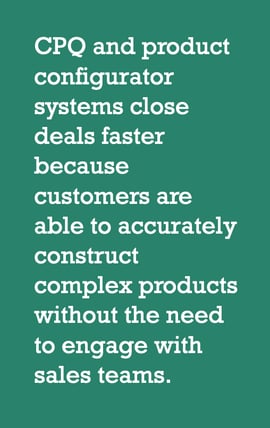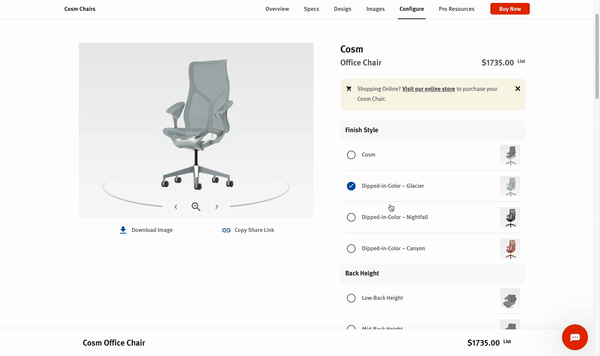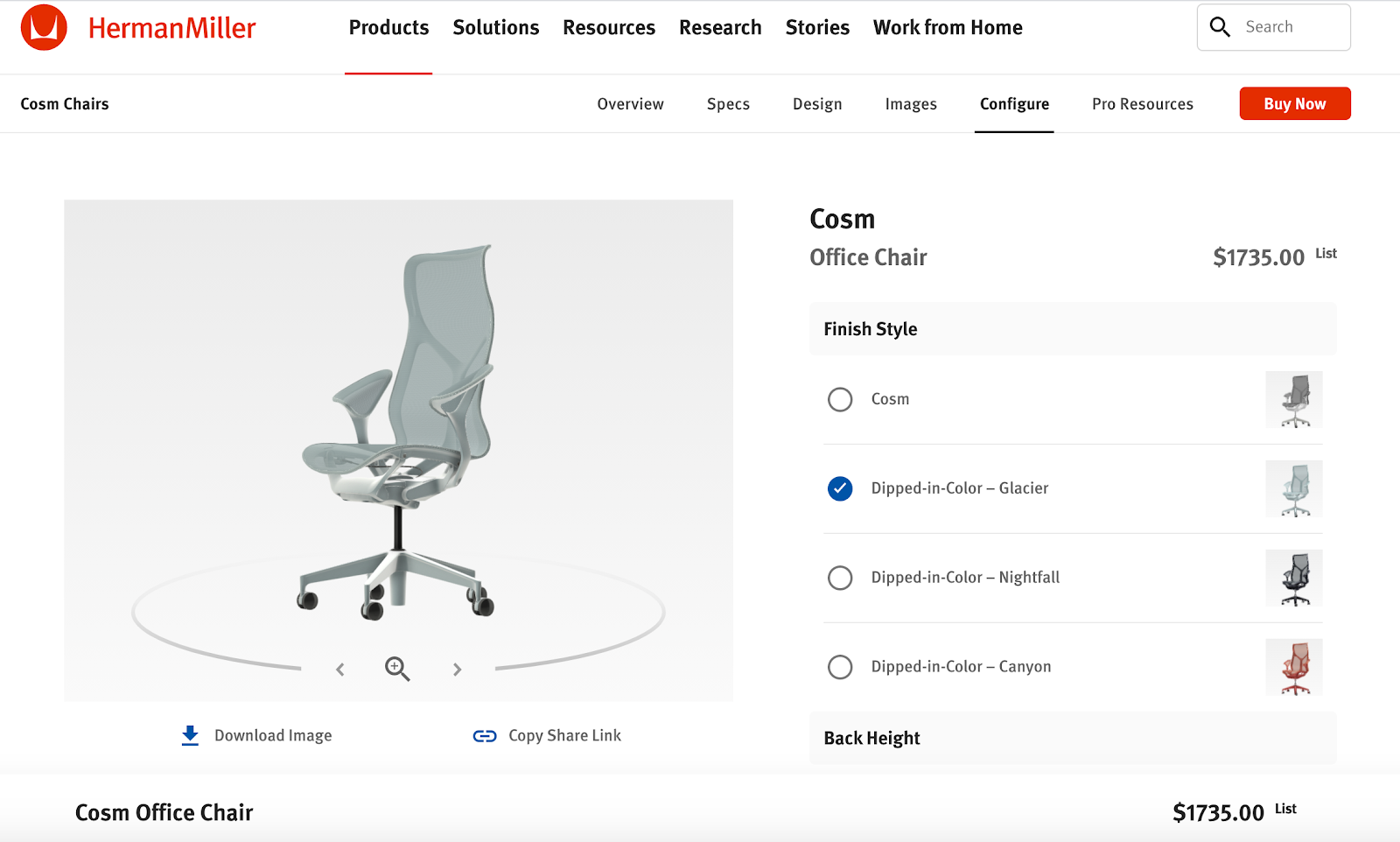Why You Need a Product Configurator in Salesforce
A product configurator in Salesforce allows manufacturers and retailers to streamline sales by implementing a CPQ process: Configure Price Quote. CPQ software takes the most important parts of the sales cycle out of spreadsheets and into an automated sales tool to deliver error-free quotes, quickly. Cloud-based and 100% mobile-compatible, the Salesforce CPQ helps sales reps sell the right product combinations, control discounting, and automate approvals. When connected to engineering teams’ software, such as CAD and a visual product configurator, CPQs offer a streamlined quoting, purchase, and fulfillment process.
-gif.gif?width=600&name=MASA%20canopy%20customizer%20(1)-gif.gif)
In this article, we’ll look at four benefits of using a CPQ solution and an eCommerce brand that is combining it with Threekit’s powerful 3D product configurator.
4 benefits of using a product configurator in Salesforce
1. Generate error-free quotes

For sales teams, generating accurate quotes before the advent of CPQ tools was a long, confusing, and inaccurate process. It required back-and-forth discussions between the customer and sales teams via phone, email, or in-person consultations. It’s during this stage of the sales process that errors often creep in: sales teams might offer incorrect product combinations or quote outdated pricing models.
The knock-on effect is a long sales cycle, stressed teams, and a frustrating customer experience. The more complex a product is, the more manufacturers risk making errors.
Product configurators and CPQ tools help minimize this risk by removing the margins of error. Accurate stock levels and current pricing are entered in the CPQ backend so everything is kept up-to-date. Customers configure their own products, using predefined components from the CPQ which instantly auto-generates accurate quotes in real time. Depending on the sales system, reps only need to confirm orders. Back-and-forth communication and errors are reduced or eliminated entirely, and the sales workflow is streamlined as a result.
Learn more about a Salesforce Product Configurator.
2. Optimize processes between teams
For many manufacturers, sales and engineering teams operate as distinct teams with very different goals and performance metrics. Furthermore, the two teams often use different systems, with engineering using CAD or related systems and sales siloing their data in spreadsheets and CRMs. Manufacturers are solving cross-functional inefficiencies by integrating visual configurators into their CPQ systems and then connecting them to ERP, CRM, and CAD systems. Teams that are using the same systems can collaborate synchronously, and make engineering and sales decisions from one centralized data source.
3. Close deals faster

One powerful benefit of adopting the Salesforce product configurator tool is that sales reps can create product visualizations themselves. Armed with the customer’s requirements and an accurate CPQ platform, reps are able to configure product quotes. If your configuration tools are linked to CAD systems , sales teams are able to provide customers not only with the traditional pricing information and technical designs but, importantly, a 3D photorealistic 3D model that customers can engage with.
From the customer side, CPQ and product configurator systems close deals faster because customers are able to accurately construct complex products without the need to engage with sales teams. Provided with a visual configuration, CAD designs, and accurate quotes, customers can get faster approval and project sign-off from their procurement departments.
The same goes for consumer products: configuring products themselves, customers send fewer support tickets and talk with sales teams less. Armed with all the component and pricing details, they’re able to make more confident, more efficient purchasing decisions.
4. Increase product control and visibility

Using the Salesforce product configurator, manufacturers and retailers are better able to control how they showcase their products, adjust quantities, add discounts, and encourage up-selling. For example, sales teams can select products from the Salesforce Product Book and then create bundles of related products.
Bundled in this way, manufacturers are able to prevent customers—and sales reps—from selecting incompatible product components, such as the wrong paper tray or toner on a commercial laser jet printer. Controlling product configuration reduces purchase or quotation errors, in turn reducing returns and shortening sales cycles.
Herman Miller: An example of a manufacturer using Salesforce CPQ and 3D visual product configurators
Herman Miller uses the Salesforce product configurator and the Threekit 3D visual product configurator. They sell complex, multi-component products with lots of customization options.
Customers can use Herman Miller’s 3D product configurator to create bespoke office chairs. The range of customizations is generous, including:
- Finish style
- Back height
- Upholstery materials
- Frame and chassis finish
- Base finish
- Tilt
- Arms
- Height adjustments
- Casters

The visual configurator presents the product as a 3D image that can be zoomed in and out and rotated 360 degrees; the image updates as you make customizations. If you need to share your design, there are options to download a high-quality PNG image or to share a link.

To the consumer, customizable elements look like “product options,” but in effect they are individual product components, bundled together in the Salesforce product configurator. For example, selecting a type of caster means selecting an individual component. The choice of certain components changes the unit cost, or quote (see below).

There’s no option to buy a configured office chair outright (although non-customizable models are available on their online shop). Instead, the configurator gives the customer the opportunity to design chairs as per their desired appearance and functionality and submit their designs to Herman Miller.
Because the manufacturer is using a configurator, it already knows the components are available, the components are compatible, and the quotation is accurate. The speed and accuracy of the configure, price, quote process then helps the customer get sign-off. For the manufacturer, there’s no back-and-forth communication, apart from confirming total price and shipping details.
Combined, the salesforce product configurator and 3D visual product configurator streamline and optimize sales processes and drastically improves user experience. If you’re selling complex products and struggling to offer a fast, accurate, and user-friendly sales process that puts your customers first, contact us to discuss how to set up CPQ and a visual product configurator for your business.


